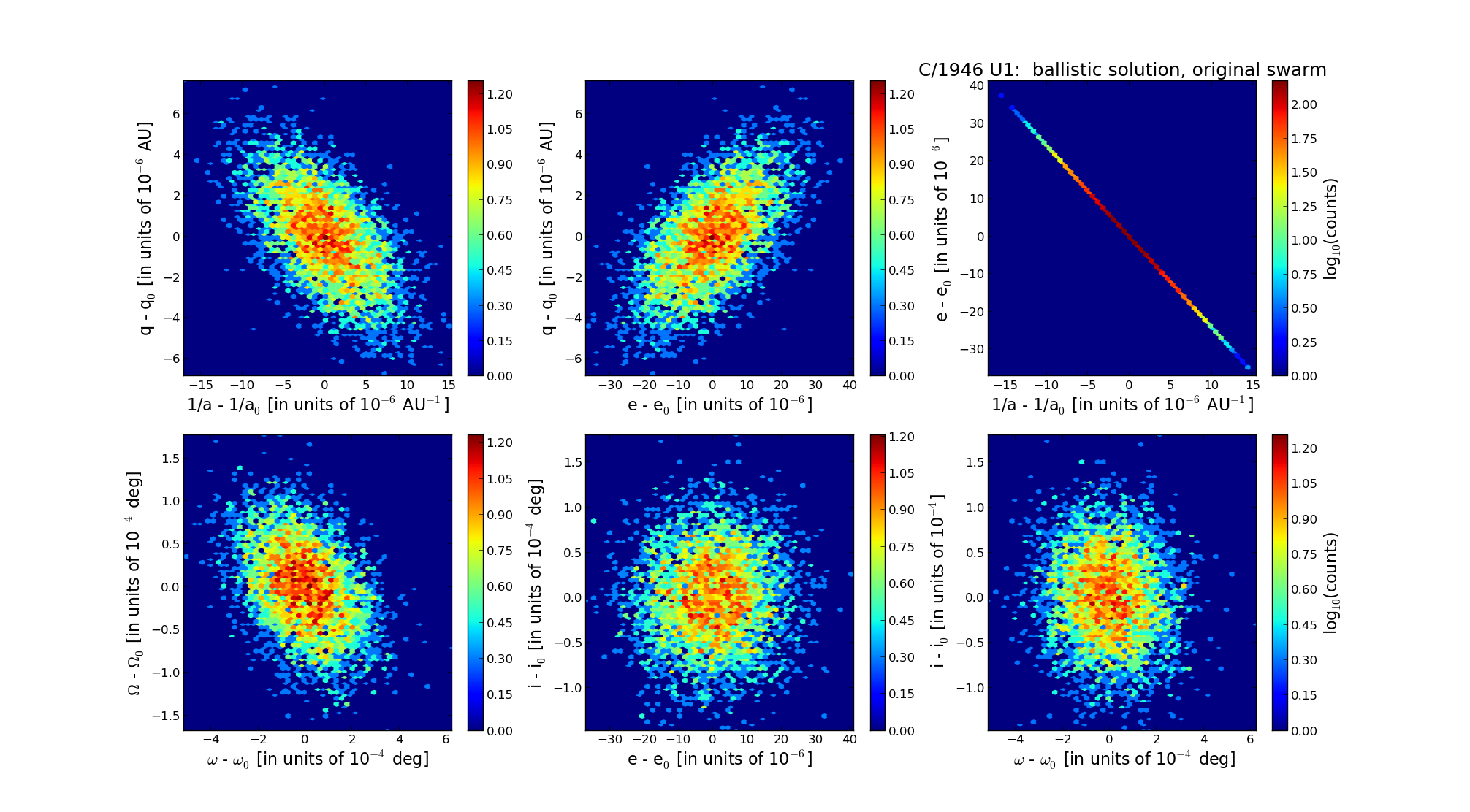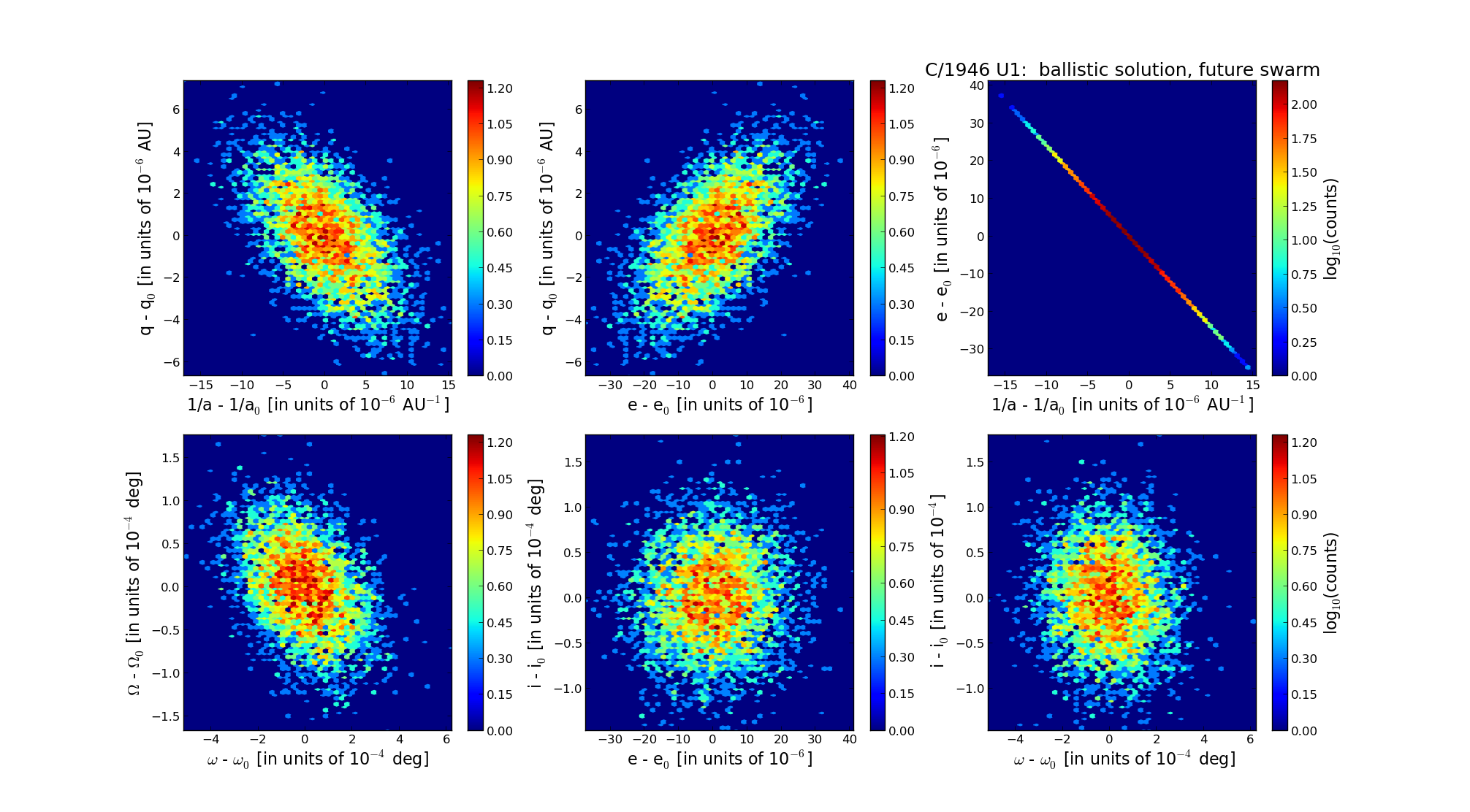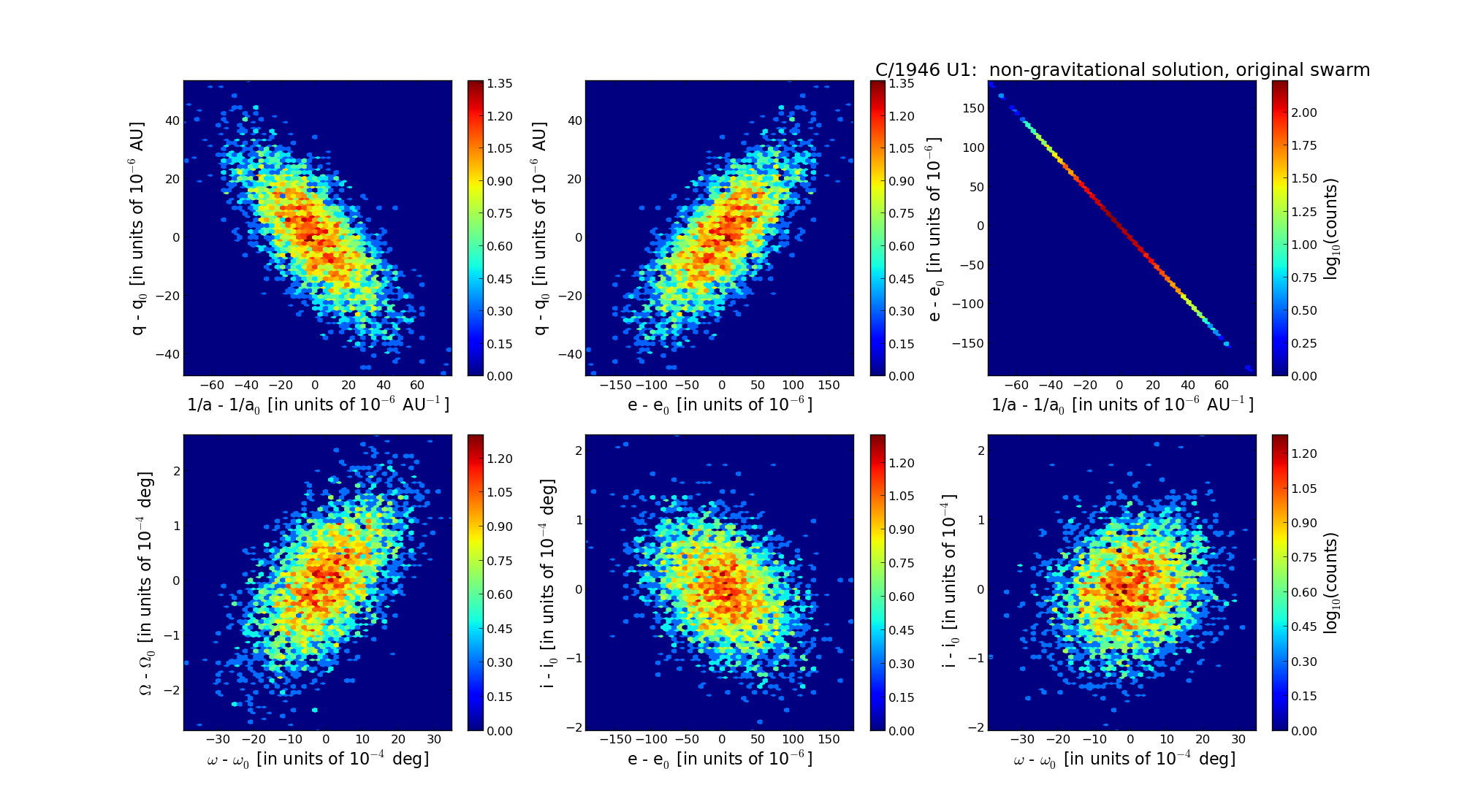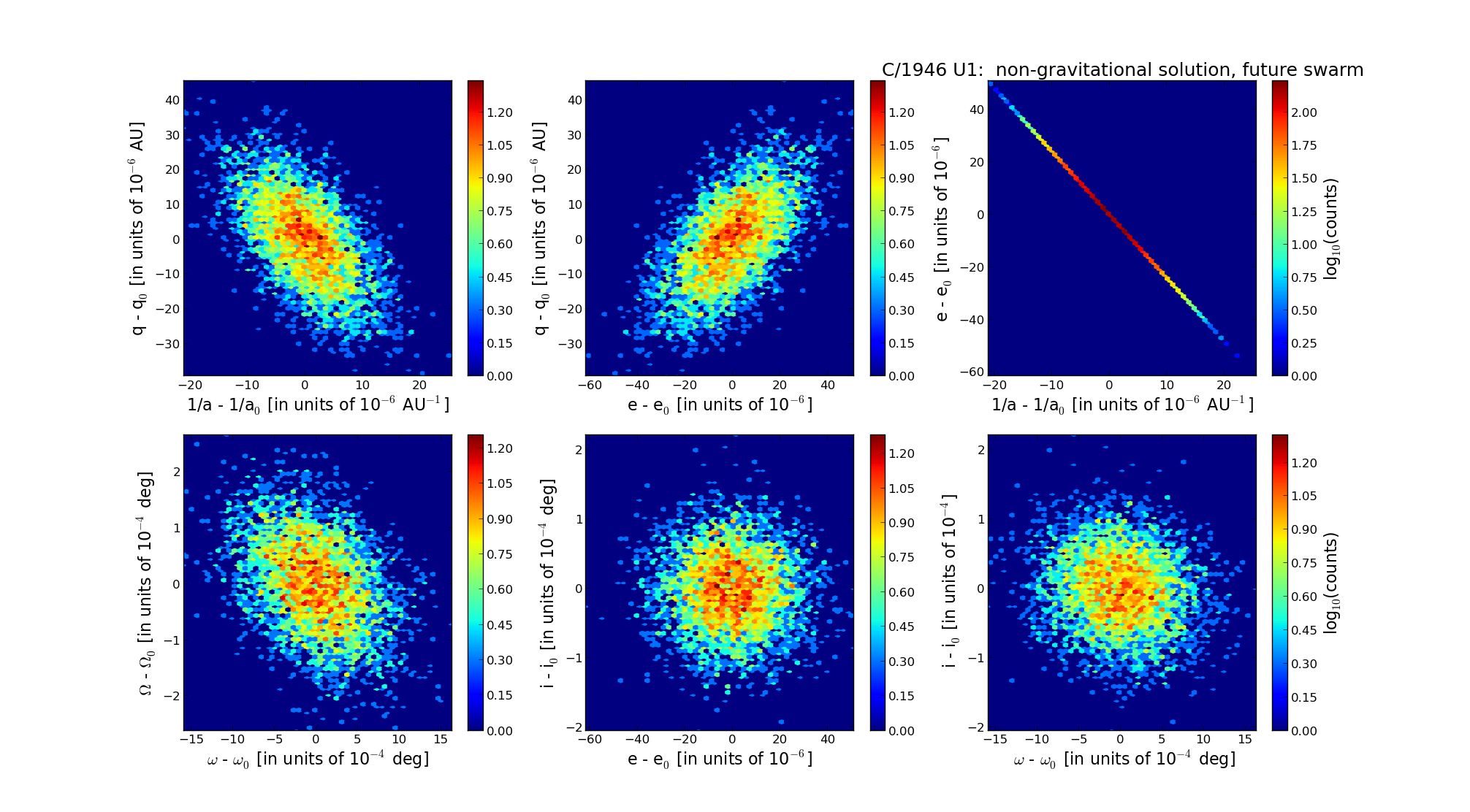| Solar System Dynamics & Planetology Group |
 |
C/1946 U1 Bester |  |
| Solar System Dynamics & Planetology Group |
 |
C/1946 U1 Bester |  |
| number of observations | 141 |
| number of residuals | 259 |
| data interval | 1946 Nov. 2 — 1948 Oct. 2 |
| rms [arcsec] | 1.25 |
| orbit quality class | 1a |
| Epoch (TT) | 19470224.0 | = JD 2432240.5 |
| time of perihelion passage (TT) | 19470207.362613 | ± 0.000422 |
| perihelion distance | 2.40766593 | ± 0.00000218 |
| eccentricity | 1.00094633 | ± 0.00001085 |
| argument of perihelion [deg] | 348.624706 | ± 0.000140 |
| longitude of the ascending node [deg] | 35.558527 | ± 0.000049 |
| inclination [deg] | 108.174444 | ± 0.000048 |
| inverse semimajor axis [10-6 au-1] | -393.05 | ± 4.50 |

| Epoch (TT) | 16460601 | |
| time of perihelion passage (TT) | 19470206.851120 | ± 0.000554 |
| perihelion distance | 2.41089055 | ± 0.00000216 |
| eccentricity | 1.00000141 | ± 0.00001094 |
| argument of perihelion [deg] | 348.604392 | ± 0.000140 |
| longitude of the ascending node [deg] | 35.566639 | ± 0.000048 |
| inclination [deg] | 108.115380 | ± 0.000048 |
| inverse semimajor axis [10-6 au-1] | -0.59 | ± 4.54 |

| Epoch (TT) | 22471228 | |
| time of perihelion passage (TT) | 19470207.503759 | ± 0.000434 |
| perihelion distance | 2.41255932 | ± 0.00000210 |
| eccentricity | 0.99993675 | ± 0.00001094 |
| argument of perihelion [deg] | 348.625816 | ± 0.000140 |
| longitude of the ascending node [deg] | 35.533705 | ± 0.000048 |
| inclination [deg] | 108.158906 | ± 0.000048 |
| inverse semimajor axis [10-6 au-1] | 26.22 | ± 4.54 |
| number of observations | 141 |
| number of residuals | 260 |
| data interval | 1946 Nov. 2 — 1948 Oct. 2 |
| rms [arcsec] | 1.18 |
| orbit quality class | 1b |
| Epoch (TT) | 19470224.0 | = JD 2432240.5 |
| time of perihelion passage (TT) | 19470207.359379 | ± 0.000829 |
| perihelion distance | 2.40760977 | ± 0.00000832 |
| eccentricity | 1.00078508 | ± 0.00002276 |
| argument of perihelion [deg] | 348.623288 | ± 0.000323 |
| longitude of the ascending node [deg] | 35.559084 | ± 0.000076 |
| inclination [deg] | 108.174491 | ± 0.000052 |
| inverse semimajor axis [10-6 au-1] | -326.08 | ± 9.45 |
| Nongravitational parameters [10-8 au/day2] | A1 = 18.522 ± 4.308 | A2 = 33.548 ± 4.813 | A3 = 0.0 (assumed) |

| Epoch (TT) | 16440830 | |
| time of perihelion passage (TT) | 19470206.867800 | ± 0.002738 |
| perihelion distance | 2.41079026 | ± 0.00001452 |
| eccentricity | 0.99962333 | ± 0.00005035 |
| argument of perihelion [deg] | 348.609407 | ± 0.000996 |
| longitude of the ascending node [deg] | 35.567221 | ± 0.000079 |
| inclination [deg] | 108.115436 | ± 0.000053 |
| inverse semimajor axis [10-6 au-1] | 156.24 | ± 20.88 |

| Epoch (TT) | 22471228 | |
| time of perihelion passage (TT) | 19470207.504905 | ± 0.001239 |
| perihelion distance | 2.41250381 | ± 0.00001204 |
| eccentricity | 0.99995116 | ± 0.00001494 |
| argument of perihelion [deg] | 348.624898 | ± 0.000455 |
| longitude of the ascending node [deg] | 35.534261 | ± 0.000076 |
| inclination [deg] | 108.158955 | ± 0.000052 |
| inverse semimajor axis [10-6 au-1] | 20.24 | ± 6.19 |